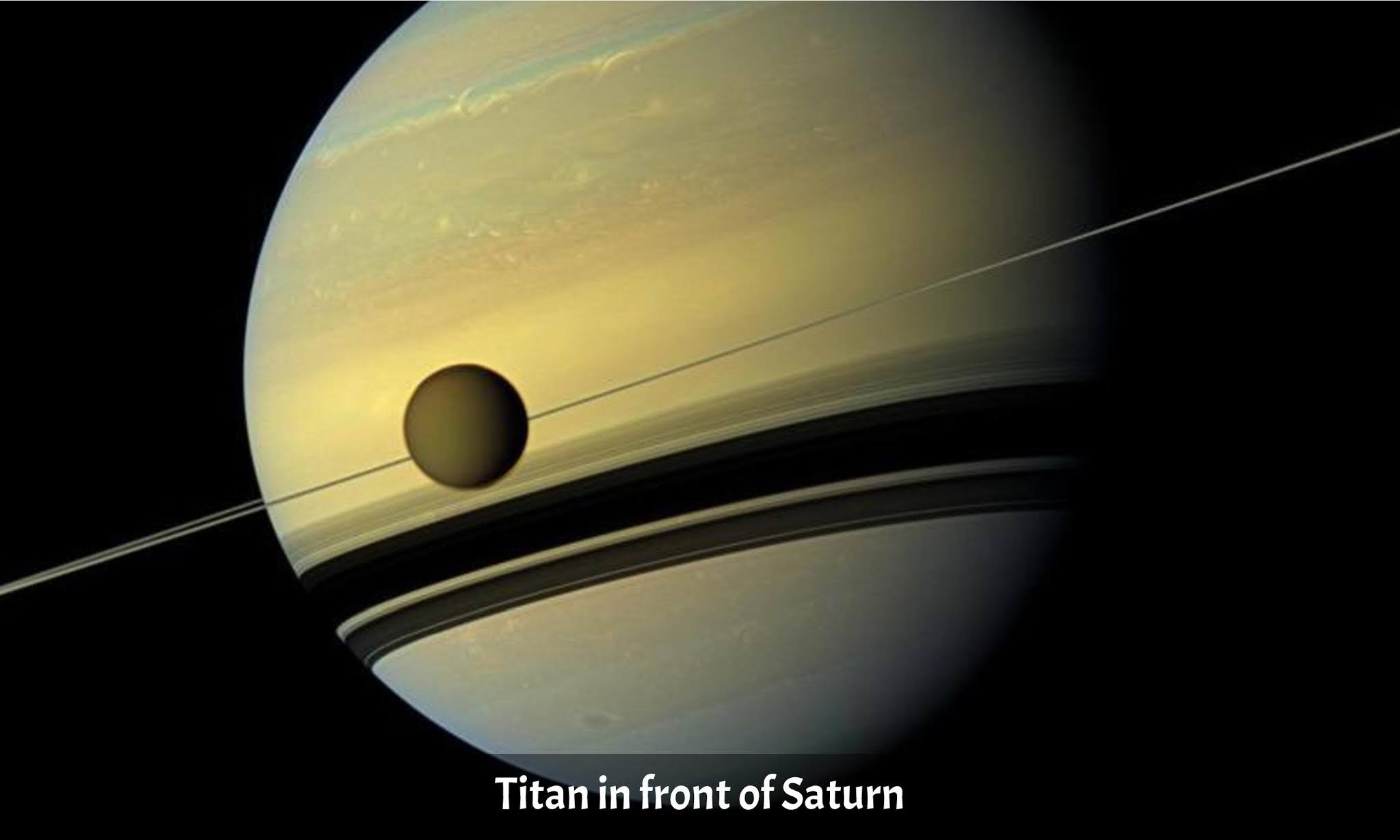Can you imagine looking up at the sky towards a huge, most beautiful, spinning ball of gas decorated by rings of water ice and dust? This is what you will see from the surface of Saturn’s moon, Titan.
A bit of History
Titan was discovered early in 1655 by a Dutch physicist and astronomer Christiaan Huygens. Later in 2005, a piece of scientific equipment aboard the Cassini space probe landed on the surface of the Titan and was named ‘Huygens Lander’. It took numerous pictures of the Titan, as it entered into its thick atmosphere and descended towards the surface.
Titan's Place in Solar System
Titan is the second-largest moon in our solar system (After Jupiter’s ‘Ganymede’) with a radius of about 2575 kilometers (Larger than the closest planet to our Sun). It orbits around the Saturn every 15 days, 22 hours. Like Earth’s moon, Titan is also tidally locked with its planet meaning the speed of rotation around its own axis and speed of revolution around Saturn matches. Hence we would only see the same side of Titan every time if we were on the surface of Saturn just as we only see one side of the moon from our Earth.
Saturn’s orbits around the Sun at a distance of about 1.5 billion kilometers. At this distance, Light takes approximately 80 minutes to reach to the Titan and is 100 times fainter than what we experience here on Earth. As a result, The surface temperature drops to -179 degrees Celcius. Water surely exists but in the form of ice rocks!
Titan's Environment
Titan resembles Earth in many ways, mainly because of the presence of a thick atmosphere with 95% Nitrogen and 5% Methane. These molecules split apart in the presence of high energy particles inside Saturn’s magnetic field and Ultraviolet radiation from sunlight into an orange-colored smog. This makes it difficult to observe the surface of the moon from outer space. But spacecraft or telescopes can still detect certain wavelengths from the surface that penetrate the smog (better explained here).
Titan’s surface is sculpted by liquid activity like here on Earth but Instead of liquid water, scientists suggest the presence of rivers, lakes, oceans of Hydrocarbons such as methane, ethane, or liquid natural gas. A highly flammable but cold environment😀! Studies conducted by Cassini spacecraft (while revolving around Saturn) and observations of Huygens Lander predict the presence of liquid water 55 to 80 kilometers below the solid ice surface. A great possibility to find fishes in there!
I will probably spend my time fishing below the icy surface while looking up at big... beautiful... Saturn😎. Of course with a protective suit and an Oxygen Mask on!.
What would you do, if you are on Titan?











No comments:
Post a Comment